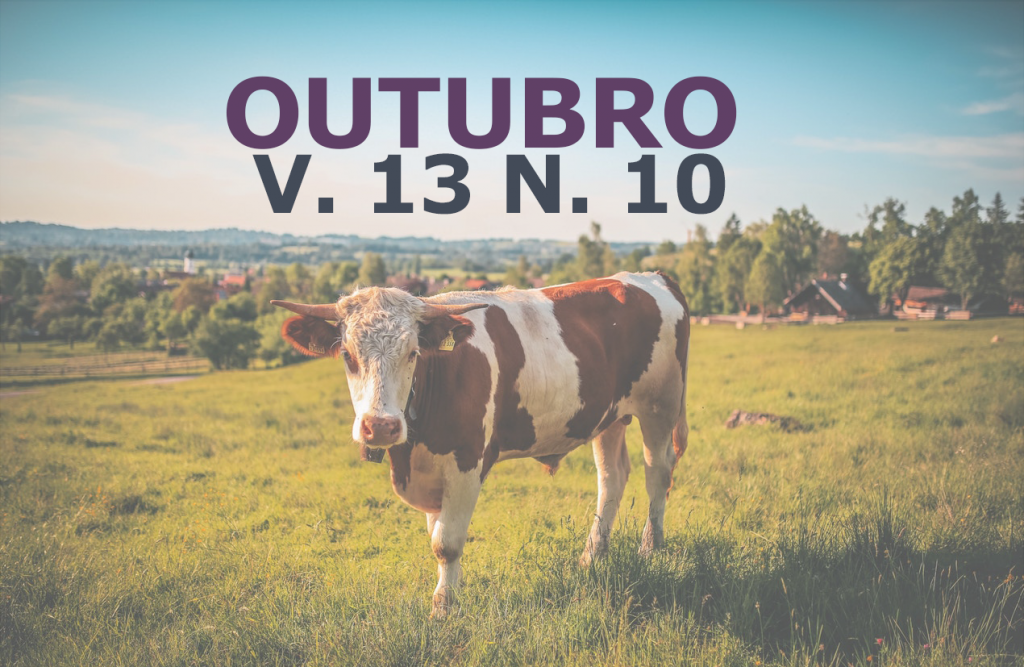Nelore bulls daily fertilization potential in the field selected by andrological assessments and sexual behavior
DOI:
https://doi.org/10.31533/pubvet.v13n10a421.1-11Keywords:
Andrology, BSE, libido, Nelore bulls, reproductive performance, ZebuAbstract
The performance of Nelore bulls in field was evaluated in single mating for 4 days with a large number of synchronized females for Nelore bulls with excellent andrological evaluation (BSE) and tested for libido were divided in 4 treatments: T1 = BSE >75 points and high libido; T2 = BSE < 75 points and high libido; T3 = BSE > 75 and low libido, and T4 = BSE < 75 points and low libido. Heat observation was done from 18 to 78 hours after implant removal, with the largest heat rates at 42 (40.1%) and at 54 (30.4%) hours. It was registered in average 24.62 ± 2.11 females in heat per group and estrus during the heat manifestation peak of 9.87 ± 1.55 females/bull. The pregnant female/bull mean rate during the challenge period was 9.25 ± 3.20. The pregnancy rate mean at the end of the 4 day challenge period was 33.33 %, ranging from 22.44 % for T4 and 47.82 % for T1 (p<0.05). The highest mean pregnancy rate was recorded 42 hours (42.67 %) after implant removal, with T2 showing the highest pregnancy rate (52.38 %) when compared to the other treatments, however with the lowest rates in the subsequent periods. Even though it was recorded decreasing in the general pregnancy rates at 54 hours after implant removal T1 bulls kept the higher pregnancy rates when compared to the other treatments. Conclusions shows that putting together bulls with high BSE and libido scores, a higher number of cows can be served during breeding season with no commitment of reproductive efficiency, besides allowing higher selection pressure and lower economical investments in bulls with higher genetic value.
Downloads
Published
Issue
Section
License
Copyright (c) 2019 Daniel Fábio Salvador, Luiz Altamiro Garcia Nogueira, Venício José de Andrade

This work is licensed under a Creative Commons Attribution 4.0 International License.
Você tem o direito de:
Compartilhar — copiar e redistribuir o material em qualquer suporte ou formato
Adaptar — remixar, transformar, e criar a partir do material para qualquer fim, mesmo que comercial.
O licenciante não pode revogar estes direitos desde que você respeite os termos da licença. De acordo com os termos seguintes:
Atribuição
— Você deve dar o crédito apropriado, prover um link para a licença e indicar se mudanças foram feitas. Você deve fazê-lo em qualquer circunstância razoável, mas de nenhuma maneira que sugira que o licenciante apoia você ou o seu uso. Sem restrições adicionais
— Você não pode aplicar termos jurídicos ou medidas de caráter tecnológico que restrinjam legalmente outros de fazerem algo que a licença permita.





